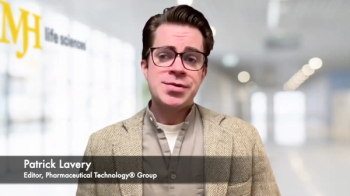
Solving Tablet-Sticking Problems with I Holland's Predictive Model
I Holland, in collaboration with the University of Nottingham and experts from the Laboratory of Biophysics and Surface Analysis, United Kingdom, recently completed a two-year tableting science anti-stick research (TSAR) project, which sought to understand why certain formulations stick to tablet tooling.
Tablet sticking is a major problem in tablet manufacture. This build up of granule on the punch tip face causes tablet press downtime and reduced tablet output. It has a negative effect on tablet appearance and often results in the removal of tablet tooling from production for regular cleaning and maintenance. I Holland, in collaboration with the University of Nottingham and experts from the Laboratory of Biophysics and Surface Analysis, United Kingdom, recently completed a two-year tableting science anti-stick research (TSAR) project, which sought to understand why certain formulations stick to tablet tooling. The aim of the joint project was to develop a predictive model that will enable the identification of an appropriate PharmaCote coating solution for formulation-sticking issues without the need to carry out expensive and time-consuming, full-scale, trial-and-error experiments with several anti-stick coatings.
The predictive model, known as TSAR≈Predict, is a mathematical model that speeds up the process of selecting the most suitable of I Holland’s anti-stick punch coatings for any sticky formulation, thereby saving the tablet manufacturing industry time and money. I Holland explains that the prediction is made based on the API and excipients and using a combination of different formulas that take into account data gathered from the analysis of the different forces that cause tablet sticking, as discussed briefly in the following:
Van der Waals. Van der Waals forces are when molecules can attract each other at moderate distances and repel each other at close range. Elements within the formulation are naturally attracted to elements within the tablet punch material. Because these forces are very low, they can only be measured in nanonewtons. In bulk behaviour, however, when lots of these forces interact on the face of a tablet, they can cause sticking.
Capillary action. Another major influencer of sticking is capillary action, which can be linked to high moisture content. If moisture is present, there is the potential for sticking in both direct compression or wet granulation. However, if the granules are very dry, often static electricity is formed, which is also a major cause of sticking.
Morphology. The morphology (surface roughness), or the outward appearance of the contact, can affect tablet production. Adhesion mapping and how the punch tip face is used to compress the powder and how that surface face interacts with the granule is critical.
Deformation mechanics. Under compression, the granule is either elastic or plastic, which will have an influence on sticking. This means that the characteristics of the granule itself under compression are also an important factor.
Environment. The environment where compressing takes place is influential on the outcome. In a very humid environment, the capillary action will cause sticking.
Chemistries. Linking back to Van der Waals forces, different chemistries on the punch tip face can influence sticking. For example, if Van der Waals forces are causing sticking where chromium is present, the chemical structure of the coating can be modified so that the element is no longer present.
According to I Holland, when coatings are developed correctly and their beneficial characteristics are matched to those of the formulation, they can help to improve corrosion resistance, wear resistance and prevent sticky formulations adhering to the punch tip faces. The company has deployed many advanced techniques such as optical surface profilometry, scanning electron microscopy, x-ray photo-electron spectroscopy (XPS), and nano wear testing equipment to help improve the performance of its coatings.
TSAR≈Predict gives a predicted particle adhesion force against each of I Holland’s PharmaCote anti-stick coatings. The model looks at a range of parameters such as surface chemistry, temperature, humidity, size of the granule, and whether it is elastic or plastic for example. TSAR≈Predict has been validated using a case study carried out on a well-known formulation, ibuprofen, and blind trials. The trials were conducted using different formulations provided by an international customer base. From the tests, a database of results was built up that validated the predicted results.
Along with the compression trials, substantial analysis using complex techniques such as atomic force microscopy (AFM) and time-of-flight secondary ion mass spectrometry (ToFSIMS) was undertaken. Adhesion mapping was another important element of the process. Techniques such as AFM and ToFSIMS were used to look at particles that are stuck to a punch tip and to analyse what they are chemically, thus working out what the interactions are. All of these techniques and varied equipment were key to development of TSAR≈Predict. Principle Component Analysis was also undertaken to understand the key interactions that cause the formulation to stick to the punch tip faces.
Newsletter
Get the essential updates shaping the future of pharma manufacturing and compliance—subscribe today to Pharmaceutical Technology and never miss a breakthrough.





